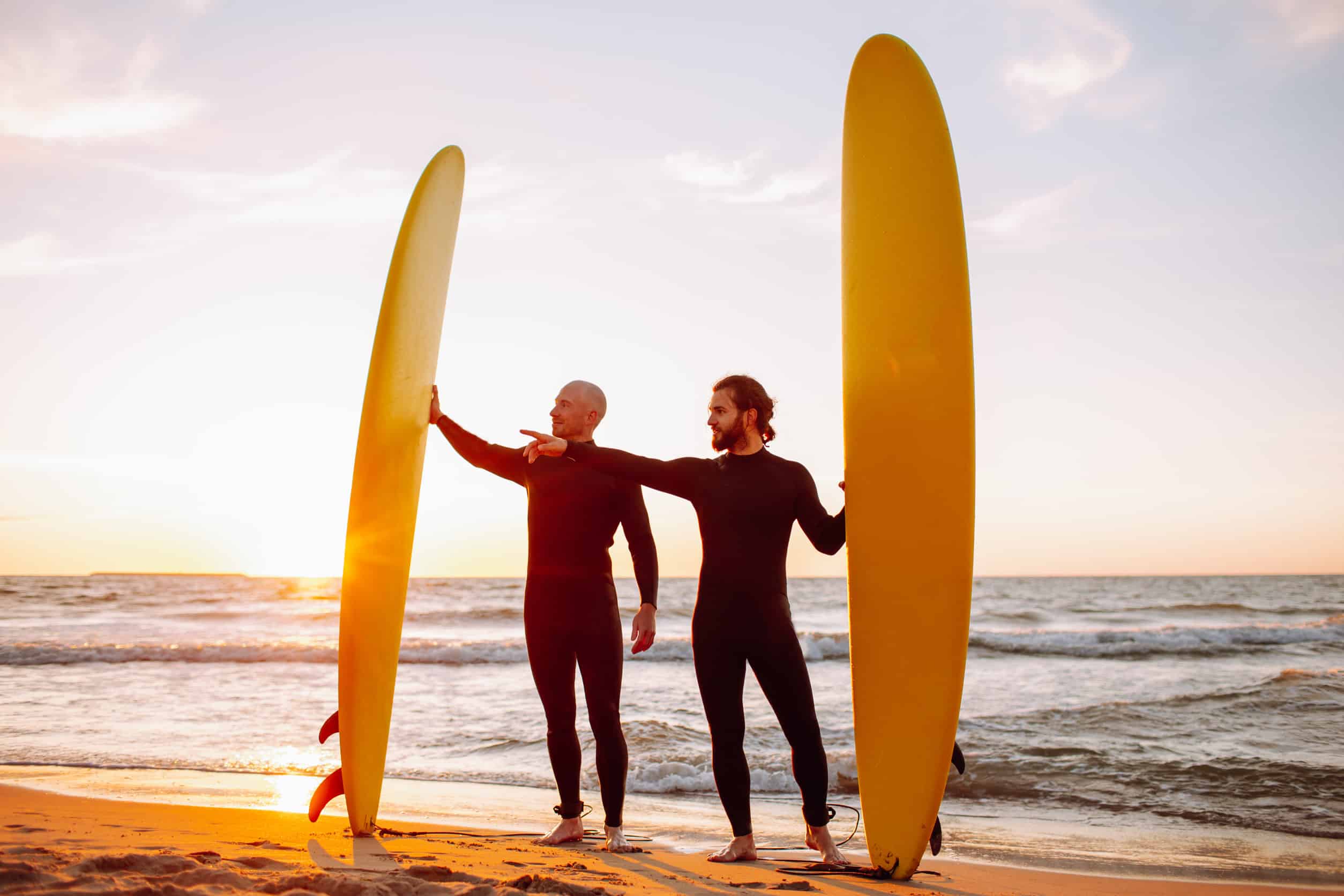Did you know there were different sizes of surfboards? The sizes help surfers of all experience levels and physical proportions to be able to surf the waves with ease. Longboards are great for beginner surfers since the extra length makes it easier to paddle and balance. However, even the longboards come in different sizes.
A good size surf longboard for beginners is between 8 and 10 feet (2.43 and 3.04 meters) long, depending on your height and weight. For shorter and lighter beginner surfers, get a board closer to 8 feet (2.43 meters). For heavier and taller beginner surfers, you’ll want to get a board closer to 10 feet (3.04 meters) long.
Overall, the size of the board plays a vital role in learning how to surf properly. We’ll dive into why the board size is important for beginners and how to decide on the perfect surf longboard for you.
Why Surfboard Sizes Vary
Arguably the most difficult part of surfing is learning how to balance on the board in the water. For this, the bigger the board, the easier it is. This phenomenon helps explain why longer boards are better for beginners.
If you compare it to other athletic activities, you can think of it as being a beginner gymnast learning how to use a balance beam. At first, the gymnast will start on a beam slightly wider than usual.
Once they improve, they will move up to a regular-sized balance beam. However, the extra room while learning how to balance was vital to their continued success as they became more experienced.
Professional surfers will typically use boards in the 6 foot (1.82 meters) range. Even the tallest of professional surfers will try to keep the board around 7 feet (2.13 meters) long or less.
When you begin surfing, it is difficult to find your point of balance on the board since the water is constantly moving under you. This is especially difficult when learning to quickly stand up on the board as a wave approaches.
A longer board will give you more practice standing since you will not have to worry as much about where your balance point is. The longer board will already assist in the balancing. As you improve the action of standing up, your point of balance will become more clear. Longboards also float better and are easier to paddle.
Longboards are also great for beginners because the extra length in the back will help you keep from digging the nose of the board under the waves. The long tail will also make it easier for a beginner surfer to turn in the water.
Height and weight are also significant factors as to why surf longboards are not one-size-fits-all. Taller surfers will have a different point of balance than shorter surfers since their center of gravity is higher up on their bodies. In turn, they need longer boards to accommodate this. On the other hand, shorter surfers have a lower center of gravity, so a shorter board works for them.
Weight also contributes to determining a person’s center of gravity. Heavier people tend to be wider as well, so the extra length on the board will help balance out the weight so they can more easily ride the waves.
How To Decide What Size Longboard To Get
As we mentioned before, the size of a longboard you get as a beginner surfer will depend heavily on your height, weight, and experience level. For beginners, longboards between 8 and 10 feet (2.43 and 3.04 meters) long are recommended.
If you are 5’6 (1.67 meters) or shorter, you will want to get the shortest version of a longboard for a beginner. This will be in the 8 foot (2.43 meter) range. However, you also want to keep in mind your personal weight. If you are under 200 pounds (90.71 kg), get a longboard that is under 8’6” (3.38 cm). If you are over 200 pounds (90.71 kg), you should look closer to the 9 foot (2.74 meters) range.
The closer you are to being 100 pounds (45.35 kg), the closer to the 8 foot (2.43 meter) mark you should buy. For example, if you are 120 pounds (54.43 kg) you may want to get a board that is exactly 8 feet (2.43 meters) long. If you are closer to 200 pounds (90.71 kg), you should get a board that is about 8’6” (3.38 cm).
If you are over 5’6 (1.67 meters) and about 150 pounds (68.03 kg) or more, you should look for a longboard that is closer to about 9 feet (2.74 meters). This will give you extra balance to accommodate your height. If you are nearing 6 feet (1.82 meters) tall, you will want a board that is at least 9 feet (2.74 meters) long. If you are in the 5’7 to 6’ (1.70 to 1.82 meter) height range and closer to 200 pounds (90.71 kg) or more, it is recommended to look for a board closer to 10 feet (3.04 meter) long.
Finally, if you are over 6 feet (1.82 meters) tall, despite your weight, you will want a 10 foot (3.04 meter) longboard. This will help you balance your height while standing up and surfing the waves. It’ll also help you find your center of gravity faster.
If you are extremely tall and consider yourself on the heavier side, they also make longboards up to the 11 foot (3.35 meter) range. Keep in mind that you only need a board this big if it accommodates your body type. You can ask a surfing instructor or sales associate at a surfing shop for help picking the proper length longboard for beginners.
Conclusion
Surfing with longboards can be very fun! Longboards have a unique feel in the water over other types of surfboards and are practical for beginners due to the extra length that helps surfers balance and move more easily in the waves.
However, it is integral to get a longboard that matches your specific height, weight, and experience requirements. In summary, shorter and lighter surfers will need a shorter longboard while taller and heavier surfers will need a longer board.
At the end of the day, surfing with the correct length longboard will help you improve at surfing so you can be a pro in no time!

